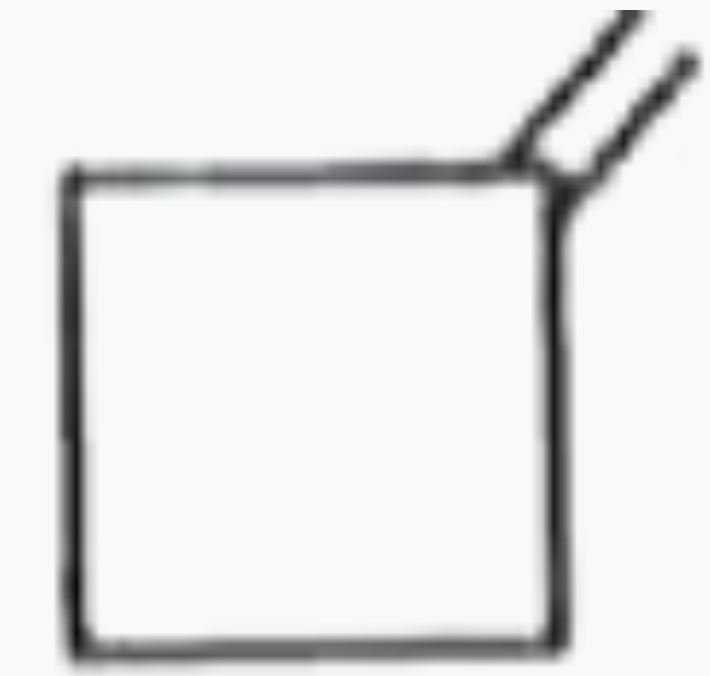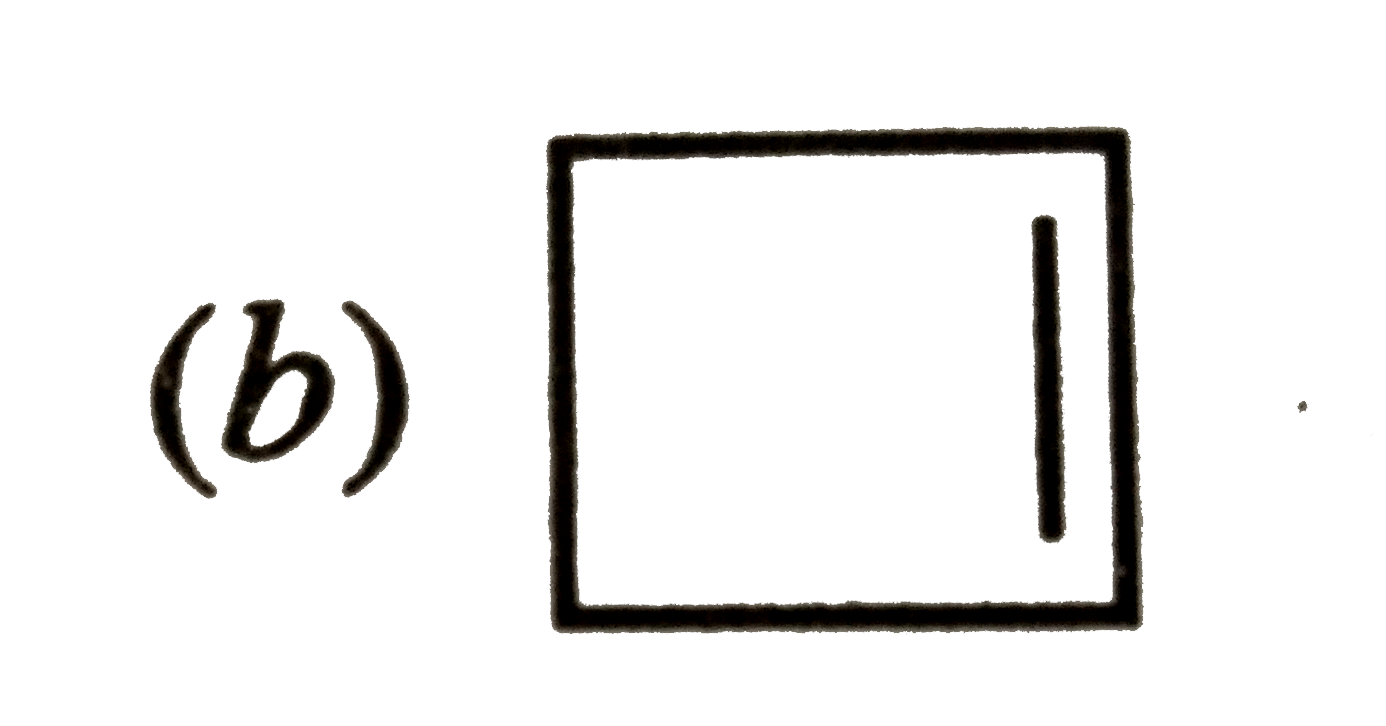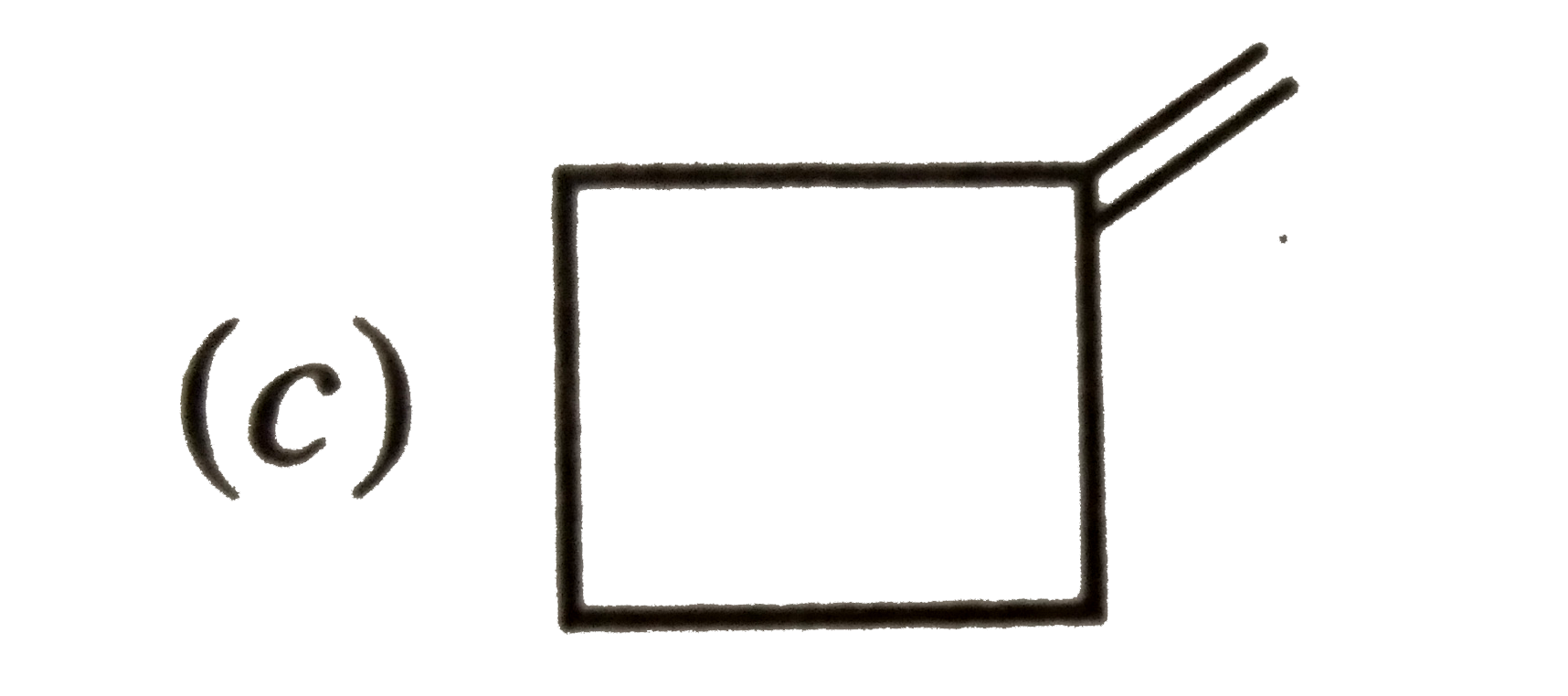The reductive ozonolysis of an alkene gave butanone and propanal. Write the structure of alkene and its IUPAC name.
To determine the structure of the alkene that undergoes reductive ozonolysis to yield butanone and propanal, we can follow these steps:
Step 1: Identify the products
The products of the reductive ozonolysis are butanone (C4H8O) and propanal (C3H6O).
Step 2: Analyze the products
- Butanone has the structure:
CH3C(=O)CH2CH3
This indicates that butanone is a ketone with a carbonyl group (C=O) located between two carbon chains.
- Propanal has the structure:
CH3CH2C(=O)H
This indicates that propanal is an aldehyde with a carbonyl group at the end of the carbon chain.
Step 3: Determine the alkene structure
To find the alkene that leads to these products, we need to consider how ozonolysis works. Ozonolysis cleaves the double bond of the alkene and forms carbonyl compounds.
1. Construct the alkene:
- The products suggest that the alkene must have a double bond that, when cleaved, will yield one carbonyl group from butanone and one from propanal.
- The alkene must have a total of 6 carbon atoms because butanone has 4 carbons and propanal has 3 carbons, but one carbon is shared in the ozonolysis reaction.
2. Propose a structure:
- The alkene that fits this description is 3-methyl-1-hexene:
CH2=CH(CH3)CH2CH2CH3
When this alkene undergoes ozonolysis, it will break the double bond to form butanone and propanal.
Step 4: Write the IUPAC name
The IUPAC name for the alkene is 3-methyl-1-hexene. This is derived from:
- The longest carbon chain (hexene) has 6 carbons.
- The double bond starts at carbon 1.
- There is a methyl group on carbon 3.
Final Answer
The structure of the alkene is:
CH2=CH(CH3)CH2CH2CH3
And its IUPAC name is 3-methyl-1-hexene.
---
The products of the reductive ozonolysis are butanone (C4H8O) and propanal (C3H6O).
- Butanone has the structure:
CH3C(=O)CH2CH3
This indicates that butanone is a ketone with a carbonyl group (C=O) located between two carbon chains.
CH3CH2C(=O)H
This indicates that propanal is an aldehyde with a carbonyl group at the end of the carbon chain.
To find the alkene that leads to these products, we need to consider how ozonolysis works. Ozonolysis cleaves the double bond of the alkene and forms carbonyl compounds.
- The products suggest that the alkene must have a double bond that, when cleaved, will yield one carbonyl group from butanone and one from propanal.
- The alkene must have a total of 6 carbon atoms because butanone has 4 carbons and propanal has 3 carbons, but one carbon is shared in the ozonolysis reaction.
- The alkene that fits this description is 3-methyl-1-hexene:
CH2=CH(CH3)CH2CH2CH3
When this alkene undergoes ozonolysis, it will break the double bond to form butanone and propanal.
The IUPAC name for the alkene is 3-methyl-1-hexene. This is derived from:
- The longest carbon chain (hexene) has 6 carbons.
- The double bond starts at carbon 1.
- There is a methyl group on carbon 3.
The structure of the alkene is:
CH2=CH(CH3)CH2CH2CH3
And its IUPAC name is 3-methyl-1-hexene.
Topper's Solved these Questions
- BOOK - MODERN PUBLICATIONCHAPTER - HYDROCARBONSEXERCISE - PRACTICE PROBLEMS34videos
HYDROCARBONS
- BOOK - MODERN PUBLICATIONCHAPTER - HYDROCARBONSEXERCISE - Conceptual Questions20videos
HYDROCARBONS
- BOOK - MODERN PUBLICATIONCHAPTER - HALOALKANES AND HALOARENESEXERCISE - UNIT PRACTICE TEST12videos
HALOALKANES AND HALOARENES
- BOOK - MODERN PUBLICATIONCHAPTER - HYDROGENEXERCISE - UNIT PRACTICE TEST (for Board Examination)9videos
HYDROGEN
Similar Questions
Knowledge Check
- Question 1 - Select One
Ozonolysis of an alkene produces only one dicarbonyl compound. The structure of the alkene is
ACH3−CH=CH−CH3B C
C DCH3−CH=CH−CH=CH3
DCH3−CH=CH−CH=CH3 - Question 2 - Select One
Ozonolysis of an alkene produces only one dicarbonyl compound. The structure of the alkene is
ACH3−CH=CH−CH3B C
C DCH3−CH=CH−CH=CH2
DCH3−CH=CH−CH=CH2 - Question 3 - Select One
Ozonolysis of an alkene produces only one dicarbonyl compound . The structure of the alkene is
ACH3−CH=CH−CH3B C
C DCH3−CH=CH−CH=CH2
DCH3−CH=CH−CH=CH2
Ozonolysis Of Alkene
View SolutionA hydrocarbon containing two double bonds gave on reductive ozonolysis ethanol, glyoxal and propanone. Predict the structure of the hydrocarbon and give its IUPAC name.
View SolutionAn unsaturated hydrocarbon 'A' adds two molecules of H2 and on reductive ozonolysis gives butane-1, 4-dial, ethanal and propanone. Give the structure of 'A' , write its IUPAC name and explain the reactions involved.
View SolutionAn unsaturated hydrocarbon 'A' adds two molecules of H2 and on reductive ozonolysis gives butane-1, 4-dial, ethanal and propanone. Give the structure of 'A' , write its IUPAC name and explain the reactions involved.
View SolutionA hydrocarbon containing two double bonds gave on reductive ozonolysis ethanol, glyoxal and propanone. Predict the structure of the hydrocarbon and give its IUPAC name.
View Solution

